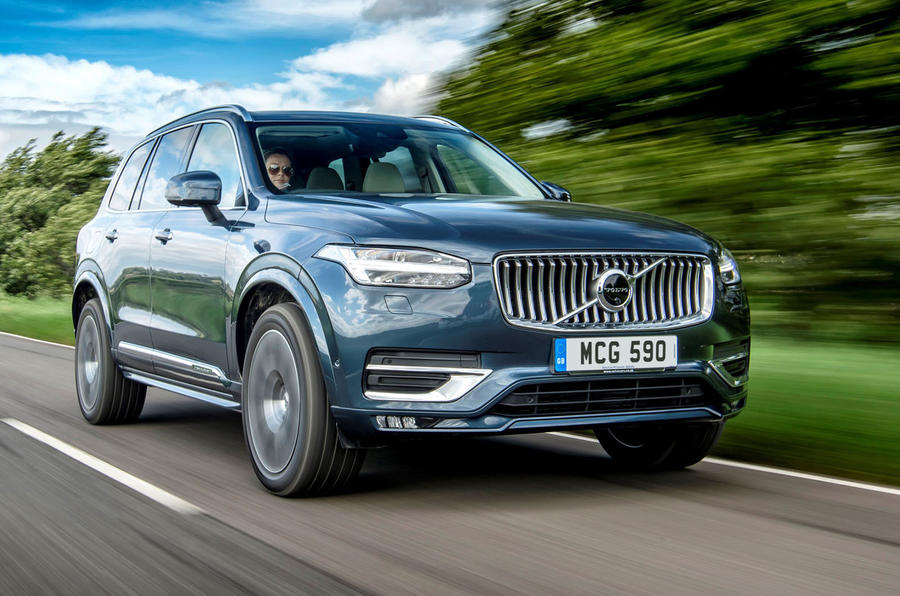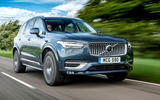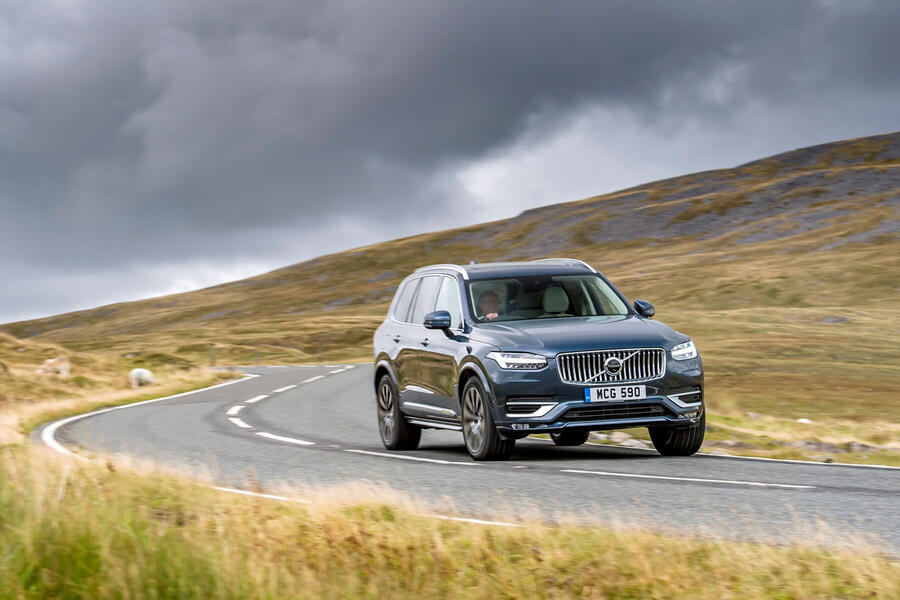What is it?
Volvo’s shift to electrification is happening faster than most, to the point it’s currently impossible to buy a Volvo XC90 from the factory without some form of hybrid assistance.
A pure electric version of the company’s seven-seat flagship SUV might be a long way off, and a plug-in powertrain remains the preserve of the T8 TwinEngine, but now even entry-level cars get a 48V starter motor/generator and small battery. The system assists the 2.0-litre engine under acceleration and regenerates power under braking, which Volvo says can help cut down on emissions over the outgoing, combustion-only car, and gives real-world fuel economy a boost too.
Our car is the B5 petrol: a 2.0-litre four cylinder, available exclusively with all-wheel drive and an eight-speed automatic transmission, but not to be confused with the slightly pricier B5 diesel. That’s also a 2.0-litre four-pot, but prefers to drink from the black pump.
There are no visual clues as to which is which, with both sporting the same mildest of mild facelifts as the rest of the range, and there’s little to separate them in performance terms, the petrol taking an extra tenth of a second to reach 62mph and having an ever-so-slightly lower top speed.

What's it like?
It’s not like there are any obvious signs the mild hybrid system is doing anything at all, an icon on the instrument cluster being the only indication that it is recuperating energy. Brake regeneration is very subtle, with nowhere near the level of deceleration you’d find in an electric car.
This is no magic bullet, though. The XC90 is still a big, heavy SUV, and while it feels responsive enough in a straight line, the engine has to work much harder here than it did in the smaller XC60 we drove earlier in the year. It’s a little more vocal under load, and fuel economy is rarely that impressive. Our testing rarely saw figures top 30mpg, even on more relaxed motorway cruises. Compare that to the high 30s we saw from a similarly-equipped B5 diesel, and it’s clear which version provides better value for money at the fuel pump.
That’s a shame, as otherwise this powertrain suits the XC90’s premium nature. It starts smoothly, is unobtrusive at slower speeds, and in traffic the start/stop system is very subtle. Momentum trim does without the optional air suspension, but even on passive dampers the ride is well-judged across most surfaces. Only particularly rough B-roads are felt to a major degree inside the cabin.









































Join the debate
Add your comment
yeah spent best part of £60k or £600pm
....on a nice but very compromised and offers little driving pleasure or performance. Does a petrol that uses 25% more fuel emit more Nitrogen dioxide or particulates than a modern ad blue "urine" diesel? I guess a bit more but its probably close.
1/2 too much money. chinese not product dumping this car?
fifty five grand is insane money for what you get. very odd because the chinese masters who own volvo usually ‘product dump’ [supported by the ccp] below cost to destroy competition, similar to what happened to the uks steal industry..
Volvo is now in no mans land, too expensive for the average pcp curtain twitcher and here in the uk company car drivers have no incentive to lease and would go for the more expense tesla
2/2 too much money. chinese not product dumping this car?
volvo will be a non starter because of the bik rates.
Tory gov changed the bik tax laws which punishes business users who lease ice vehicles and give amazing tax subsidies to evs which in turn makes the monthly payments on the more expensive model x lower than the volvo.
As much as I despise tesla and the musk cult they are kings at gaming the system so the average ratepayer is subsidizing the rich in turn dodging tax on their seventy plus grand toy
The trouble with Volvo is they are scrapping diesels soon
So you would not want the petrol as is lousy on fuel and underpowered and they will stop the hybrid diesel soon as their recent press release informed us,so that will lose a load on being obsolete.